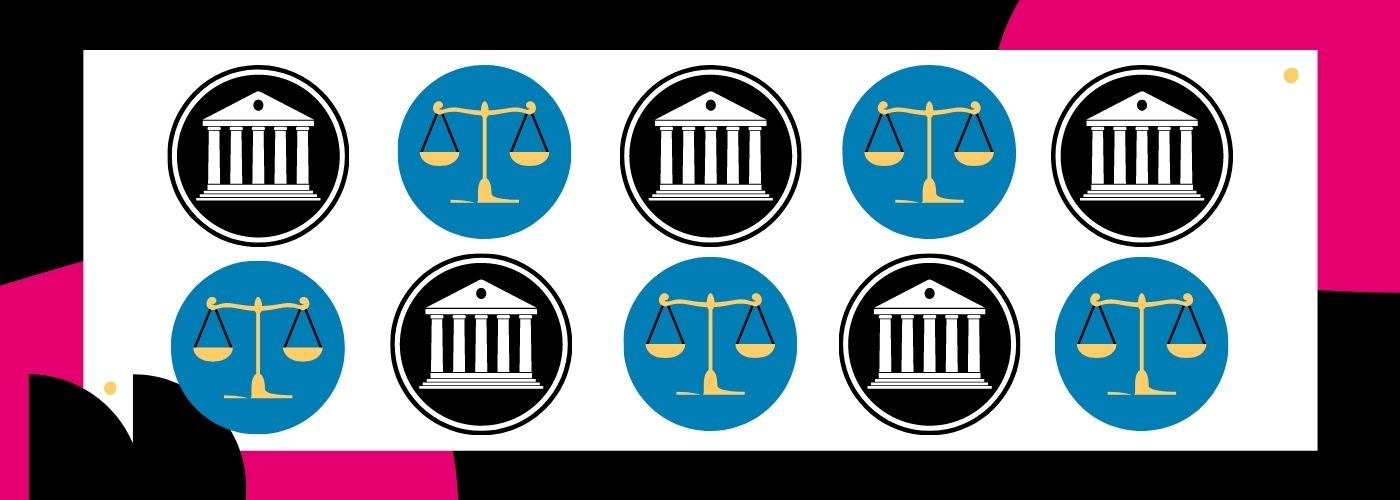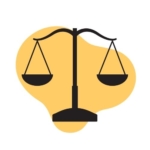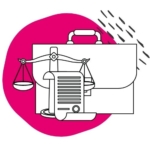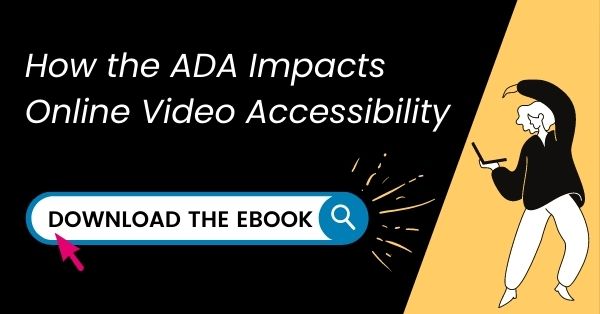Deep Dive on Major Web Accessibility Laws
There are about one billion people, or 15% of the global population, living with some form of disability who directly benefit from accessibility laws.
According to The World Bank, individuals with disabilities are more likely to experience fewer opportunities for employment, higher poverty rates, less education, and poorer health outcomes.
Accessibility barriers hinder people with disabilities from fully participating in society. Social and economic exclusion are typically due to inaccessible places, goods, or services.
Although a disability may create challenges for an individual, they must often have to deal with how others fail to acknowledge or accommodate their disability.
World governments realize that in order to create an equitable and fair society, there need to be laws in place to protect people with disabilities. Below, we discuss the major accessibility laws that protect individuals with disabilities within the United States and around the world.
Read the Ebook: How the ADA Impacts Online Video Accessibility ➡️
The United States Web Accessibility Laws
Americans with Disabilities Act (ADA)
The Americans with Disabilities Act (ADA) is a broad anti-discrimination law for people with disabilities in all public life – such as places of employment, education, transportation, and public and private organizations.
Enacted in 1990, the ADA sought to ensure that people with disabilities have the same rights as citizens without disabilities.
Disabilities covered under the ADA include physical (i.e. muscular dystrophy, dwarfism, etc.), sensory (i.e. blindness, deafness, etc.), and cognitive (i.e. Down Syndrome). In 2008, the ADA was broadened to cover psychological, emotional, and physiological disabilities as well.
The ADA is divided into five sections, called titles, related to different areas of public life.
- Title I: Employment
- Title II: State and Local Governments
- Title III: Places of Public Accommodation
- Title IV: Telecommunications
- Title V: Miscellaneous Provisions
For the purpose of this article, we’ll discuss the two titles that relate most to web accessibility, Title II and Title III.
Title II
Title II of the ADA prohibits discrimination on the basis of disability by all public entities at the federal, state, and local levels (i.e. public schools, police departments, public libraries, etc.).
Government organizations must ensure “effective communication” with citizens, which means providing assistive technology or services as needed.
Title II mandates that state and local governments:
- May not refuse to allow a person with a disability to participate in a service, program, or activity simply because the person has a disability
- Must provide programs and services in an integrated setting, unless separate or different measures are necessary to ensure equal opportunity
- Must furnish auxiliary aids and services when necessary to ensure effective communication, unless an undue burden or fundamental alteration would result
- Must operate programs so that when viewed in their entirety, they are readily accessible to and usable by individuals with disabilities
Whether it’s for entertainment or informational purposes, governments must make publicly available and internal videos accessible – which means including closed captioning and audio description. Additionally, websites should also be fully accessible for both users and employees.
Title III
Title III of the ADA prohibits discrimination by places of public accommodation. Examples include universities, museums, hotels, and restaurants.
In order for a business or organization to be classified as a “place of public accommodation,” it must follow the following criteria:
- Must be operated by a private entity
- Its operations must affect commerce
A place of public accommodations must also fall within one of the following 12 categories:
- Places of lodging
- Establishments serving food or drink
- Places of exhibition or entertainment
- Places of public gathering
- Sales or rental establishments
- Service establishments
- Stations used for specified public transportation
- Places of public display or collection
- Places of recreation
- Places of education
- Social service center establishments
- Places of exercise and recreation
Under Title III, no individual can be discriminated against based on their disability. They have the right to the full and equal enjoyment of the goods and services provided by any business or organization.
Before the rise of the internet, it was assumed that the ADA only applied to physical structures, like a brick and mortar store. However, lawsuits against private companies for providing inaccessible websites, services, or digital communications have created a precedent that the ADA also applies to the internet and online businesses.
Note: the ADA was revised in November 2016 by Attorney General Loretta Lynch to include providing auxiliary aids and services for people with disabilities, as well as providing closed captioning and audio descriptions for showings in movie theaters.
Discover how the ADA impacts online video accessibility
The Rehabilitation Act of 1973
The Rehabilitation Act was enacted in 1973 and prohibits discrimination on the basis of disability in programs conducted by federal agencies, programs that receive federal funding, in federal employment, and in the employment practices of federal contractors.
Out of all the accessibility laws in the U.S., The Rehabilitation Act has the most direct impact on federal agencies when it comes to protecting people with disabilities.
The Rehabilitation Act contains several sections. We’ll talk about the two sections that pertain the most to web accessibility: Section 504 and Section 508.
Section 504
Section 504 prohibits federal government entities from discriminating on the basis of disability. It explicitly states that organizations that receive federal funding should provide accommodations to persons with disabilities in order to ensure equal access.
Section 508
Section 508 requires that electronic communications and information technologies – like emails, websites, and web documents – be accessible to people with disabilities.
The law does not make exceptions. Organizations must make their content accessible unless there is an “undue burden”. For example, if there is a company that creates training videos for employees, but can’t afford to include closed captions, they will not be penalized. However, they must provide an alternative like a transcript or sign language interpreter.
Section 508 has been influenced by the Web Content Accessibility Guidelines (WCAG). It adopted some of the guidelines, but not everything. WCAG is a far more detailed standard than 508.
In January 2017, Section 508 was refreshed to modernize the law. Now it directly references WCAG 2.0 level AA success criteria for web content, web applications, software, and documents.
*Note: The most up-to-date WCAG guidelines are WCAG 2.1.
21st Century Communications and Video Accessibility Act (CVAA)
The CVAA was passed in 2010 and addresses closed captioning for online video. It applies to all online video that previously aired on U.S. television with closed captions.
The CVAA applies to streaming services that distribute T.V. shows online, as well as movie trailers and montages. Clips and montages of live programming are allowed a 12-hour delay after the programming has been shown on T.V. For clips of near-live programming, an 8-hour delay is allowed.
Video content must comply with the Federal Communications Commission (FCC) closed captioning regulations, including quality standards for timing, placement, accuracy, and completeness.
The FCC regulates interstate and international communication via television, radio, and the internet.
State Accessibility Laws
Many states have adopted Section 508 federal regulations into their own laws. These are called “mini-508s,” and they require that state government entities comply with federal accessibility standards.
There are some states that have created their own accessibility laws based on Section 508 or other standards.
Canada Web Accessibility Laws
Accessibility for Ontarians with Disabilities Act (AODA)
The AODA was instituted in 2005 to regulate accessibility standards for government and business sectors in Ontario. Its objective is to make Ontario barrier-free by the year 2025 so that everyone can fully participate in society.
The AODA has five different areas of business:
- Customer Service: All organizations that provide goods or services in Ontario
- Employment: Accessibility will become a regular part of finding, hiring, and supporting employees with disabilities
- Information and Communications: All web content must be accessible according to WCAG 2.0, and all other resources and materials must be provided in accessible formats
- Transportation: Conventional and specialized transportation services must be physically accessible and must provide accessible information
- Design of Public Spaces: Barriers must be removed from buildings and designed public spaces
Considered the most progressive accessibility law in the world, the AODA requires WCAG 2.0 compliance for every public and private institution except for private organizations with fewer than 50 people.
Under the AODA, closed captioning is required for all video content.
Canadian Radio-Television and Telecommunications Commission
In 2007, Canada’s broadcasting industry established two closed captioning working groups under the direction of the CRTC.
The goal of the CRTC was to form captioning standards that ensure consistency and reliability throughout the Canadian broadcasting system.
The CRTC requires that most broadcasters caption 100% of their programs during a broadcast day – between 6 am and midnight. Broadcasters also have to ensure advertisements and overnight (midnight – 6 am) programs are captioned.
The accuracy standard set by CRTC
- Pre-recorded must strive for 100% accuracy
- Live programming strive for 85% in French and 95% in English (due to closed captioning techniques used by each market)
Learn more about the ADA and online video accessibility. Download the ebook ➡️
The United Kingdom Web Accessibility Laws
The Equality Act
The EQA is Britain’s landmark anti-discrimination law and is comparable to the U.S.’s ADA. It consolidated 116+ laws into one single bill.
The EQA protects individuals regardless of disability and requires employers to make “reasonable adjustments” to accommodate people with disabilities.
Similar to the ADA, the EQA doesn’t directly mention web accessibility. However, there’s a growing consensus that websites must be fully accessible. Companies and organizations, including public entities and universities, who don’t comply may be sued for discrimination.
British National Standard (8878)
The BSI, published in 2010, sets standards for goods and services in Britain.
It covers accessibility standards for all web products including websites, cloud-based software, web applications, and email.
The BSI outlines an actionable accessibility strategy and even provides a template for writing your organization’s accessibility policy statement.
Communications Act of 2003
This act grants Ofcom the full authority of telecommunications and broadcast media in the U.K.
Similar to the FCC in the U.S., Ofcom regulates communications services like T.V., radio, and on-demand streaming services.
The Communications Act of 2003 increased requirements to provide “television access services” like subtitling, sign language, and audio description for video content.
Australia Web Accessibility Laws
Broadcasting Services Act
The Broadcasting Services Act gave the Australian parliament power to set requirements for closed captioning of broadcast media.
It specifies caption compliance for public T.V. Programs aired between 6 am and midnight, including news and current affairs footage, must be 100% captioned.
Disability Discrimination Act of 1992
The Disability Discrimination Act protects the civil rights of individuals with disabilities and mandates certain accommodations that should be provided. All goods, services, and facilities must be accessible.
Violations are considered discrimination and can be reported to the Australian Human Rights Commission for disciplinary action.
“It is unlawful for a person who, whether for payment or not, provides goods or services, or makes facilities available, to discriminate against another person on the ground of the other person’s disability”
New Zealand Web Accessibility Laws
Web Accessibility Standard
The Web Accessibility Standard of New Zealand sets inclusive web design requirements. This Standard is based on the Web Content Accessibility Guidelines (WCAG) 2.1, the international standard for web accessibility.
The federal government adheres to both an official Web Accessibility Standard and a Web Usability Standard.
Under the Web Accessibility Standard, web video must be WCAG 2.1 AA compliant. This means providing closed captioning for pre-recorded content with a grace period of 10 business days.
Live captioning is required for “high stakes” information, like public safety announcements or election news.
Want to learn more about how the ADA impacts online video accessibility? Download our ebook:
This blog post is written for educational and general information purposes only and does not constitute specific legal advice. This blog should not be used as a substitute for competent legal advice from a licensed professional attorney in your state.
This post was originally published by Samantha Sauld on June 27, 2019, and has since been updated.










